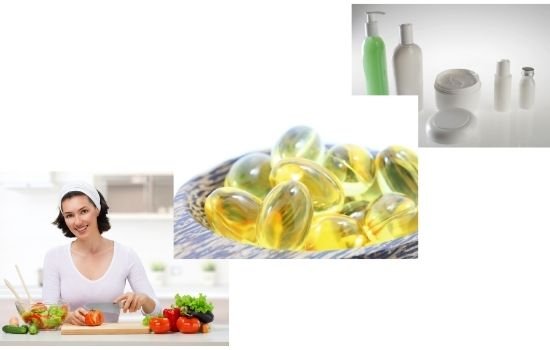Asia: Leading the Growth of Cellulose Ether
MIKEM Information Asia: Leading the Growth of Cellulose Ether Asia: Leading the Growth of Cellulose Ether According to the latest report from IHS Markit,
According to the latest report from IHS Markit, the global consumption of cellulose ethers, water-soluble polymers produced by chemical modification of cellulose, was close to 1.1 million tons in 2018. Of the total global production of cellulose ethers in 2018, 43% came from Asia (China accounted for 79% of Asian production), Western Europe accounted for 36%, and North America accounted for 8%. According to IHS Markit, the consumption of cellulose ethers is expected to grow at an average annual rate of 2.9% from 2018 to 2023. During the period, the growth rate of demand in mature markets in North America and Western Europe will be lower than the world average, 1.2% and 1.3%, respectively, while the growth rate of demand in Asia and Oceania will be higher than the global average, 3.8%. The growth rate of Chinese demand is 3.4%, and the growth rate of Central and Eastern Europe is 3.8%.
The region with the largest global consumption of cellulose ether in 2018 is Asia, accounting for 40% of the total consumption, and China is the main driving force. Western Europe and North America account for 19% and 11% of global consumption, respectively. Carboxymethyl cellulose (CMC) accounted for 50% of the total consumption of cellulose ethers in 2018. Still, it is expected that its growth rate in the future will be lower than that of cellulose ethers as a whole. Methyl cellulose/hydroxypropyl methyl cellulose (MC/HPMC) accounted for 33% of the total consumption, hydroxyethyl cellulose (HEC) accounted for 13%, and other cellulose ethers accounted for about 3%.
 The report pointed out that cellulose ethers are widely used as thickeners, binders, emulsifiers, humectants, and viscosity control agents. End-use applications include sealants and grouts, food, paints, and coatings, as well as prescription drugs and nutritional supplements. Various cellulose ethers also compete in many application markets and compete with other products with similar functions, such as synthetic water-soluble polymers and natural water-soluble polymers. Synthetic water-soluble polymers include polyacrylate, polyvinyl alcohol, and polyurethane, while natural water-soluble polymers mainly include xanthan glue, carrageenan, and others. In a specific application, which polymer the consumer ultimately chooses will depend on the trade-off between availability, performance and price, and the effect of use.
The report pointed out that cellulose ethers are widely used as thickeners, binders, emulsifiers, humectants, and viscosity control agents. End-use applications include sealants and grouts, food, paints, and coatings, as well as prescription drugs and nutritional supplements. Various cellulose ethers also compete in many application markets and compete with other products with similar functions, such as synthetic water-soluble polymers and natural water-soluble polymers. Synthetic water-soluble polymers include polyacrylate, polyvinyl alcohol, and polyurethane, while natural water-soluble polymers mainly include xanthan glue, carrageenan, and others. In a specific application, which polymer the consumer ultimately chooses will depend on the trade-off between availability, performance and price, and the effect of use.
 In 2018, the total global carboxymethyl cellulose (CMC) market reached 530,000 tons, divided into industrial grade, semi-purified grade, and high purity grade. The most important end-use of CMC is detergent. Industrial CMC is used, which accounts for about 22% of consumption; oil field applications account for about 20%; food additives account for about 13%. CMC’s main markets are relatively mature in many regions, but the demand in the oilfield industry is volatile and linked to oil prices. CMC also faces competition from other products. For example, in specific applications, hydrocolloids can provide excellent performance. According to IHS Markit, demand for cellulose ethers other than CMC will be driven by architectural end uses (including surface coatings) and food, medical, and personal care applications.
In 2018, the total global carboxymethyl cellulose (CMC) market reached 530,000 tons, divided into industrial grade, semi-purified grade, and high purity grade. The most important end-use of CMC is detergent. Industrial CMC is used, which accounts for about 22% of consumption; oil field applications account for about 20%; food additives account for about 13%. CMC’s main markets are relatively mature in many regions, but the demand in the oilfield industry is volatile and linked to oil prices. CMC also faces competition from other products. For example, in specific applications, hydrocolloids can provide excellent performance. According to IHS Markit, demand for cellulose ethers other than CMC will be driven by architectural end uses (including surface coatings) and food, medical, and personal care applications.
Mikem cellulose ethers, including HPMC, HEMC, HEC, and CMC, etc., are widely used in many industries of our everyday life. Mikem is divided into four business divisions, and its organizational structure is based on the four primary industries we serve (Building and Construction, Pharmaceutical Intermediates, Home and Personal Care, Food and Beverage). Please do not hesitate to CONTACT US for more information or a sample!

MIKEM is a global manufacturer and supplier of specialty chemical products. We are committed to becoming your preferred partner in specialty chemicals with our competitive product portfolio, strong R&D capabilities, and professional formulation expertise .
MIKEM Information Asia: Leading the Growth of Cellulose Ether Asia: Leading the Growth of Cellulose Ether According to the latest report from IHS Markit,